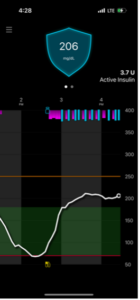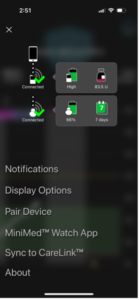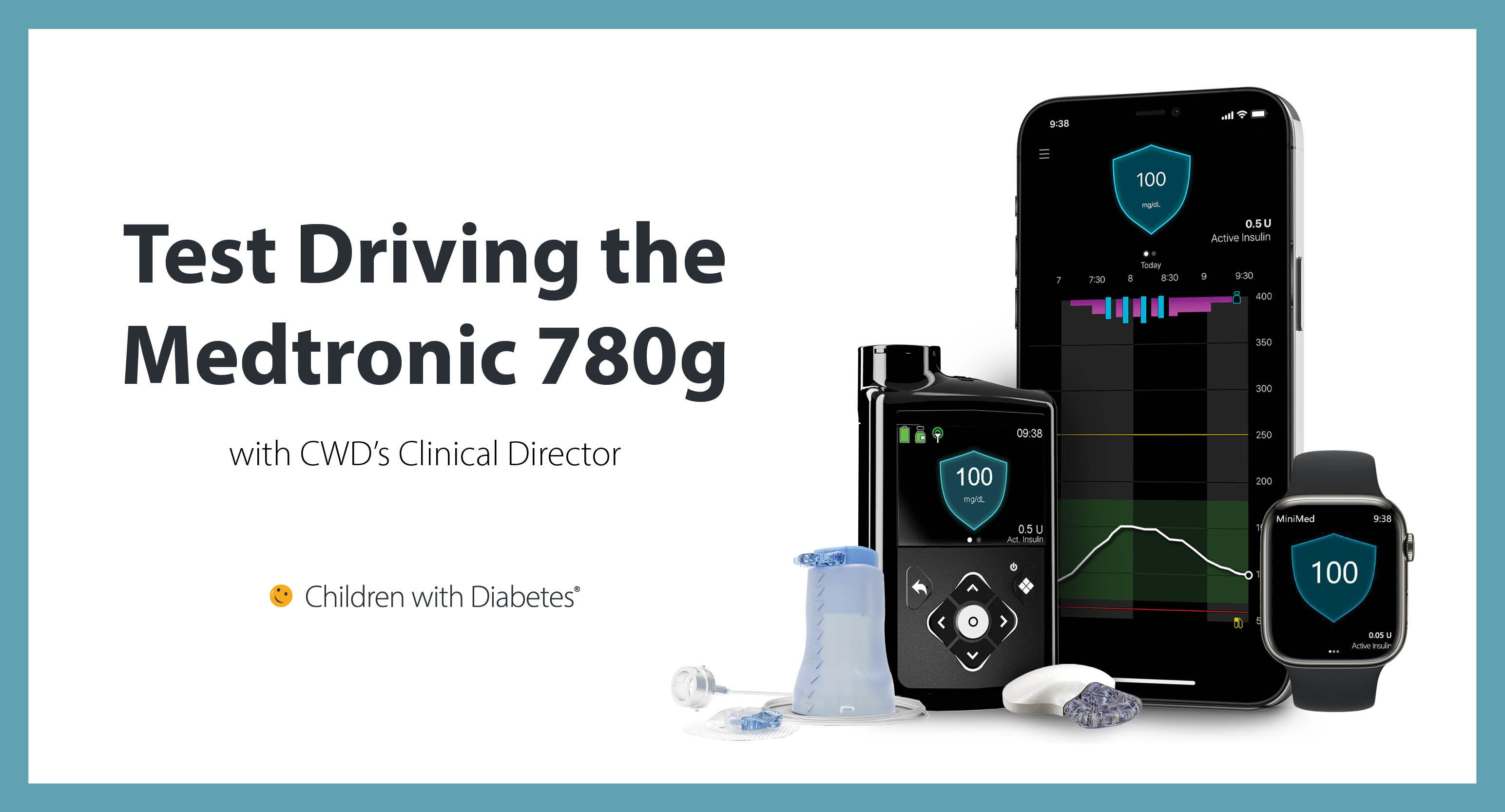Each time I try a new automated insulin delivery (AID) system, I find there are things I like and dislike about the system. As with most things, you have to find something that works for you and your diabetes management goals. For me, one of my main goals for diabetes management is to reduce my burden while getting optimal Time in Range (TIR). For the last few weeks, I have been trying out the Medtronic 780G and I’d like to share my thoughts about the system.
Not the Old Medtronic CGM
Those of us who have been around the block with diabetes may have some not-so-fond memories of the older generations of Medtronic’s continuous glucose monitors. The good news is that the Guardian 4 is a much-improved CGM compared to past generations. It still has the reusable and chargeable transmitter that is shaped like a seashell.
- Pros: The accuracy is comparable to Dexcom CGMs and the insertion is typically not painful.
- Cons: The insertion can be a little tricky compared to the latest Dexcom and Abbott CGMs, and the tape that comes with it is also more complicated.
The person who trained me recommended using a Sim-Patch overtop the entire CGM to avoid the challenges with the tape that comes with the CGMs, and I’ve found this to be very helpful. She also recommended a trick of holding down the CGM with your thumb and ring finger then using index and middle fingers to pull out the needle. This is obviously much easier with your dominant hand, but I’ve been able to do it with my non-dominant as well.
The Algorithm
At the start, I was having about the same TIR as previously, on Tandem’s Control-IQ system. While I was overall satisfied, I was not sure if I preferred this to any other algorithm. I will say that the algorithm seems to be more aggressive than others, especially if you use the recommended settings of Insulin Duration 2 hours and Target BG 100 mg/dl.




After wearing it for a couple of weeks, I saw Medtronic Senior Director of Global Medical Affairs and PWD, Dr. Jen McVean. I was telling her about my concerns and frustrations – that my infusion sets didn’t seem to last the full 7 days (more on this later) and that my percent TIR was not as high as I was expecting it to be. I explained further that I had friends who were achieving 90 to 100% TIR on this system, and I was disappointed not getting to that high percentage.
Dr. McVean suggested strengthening my insulin to carb ratios, and suggested using an equation that I was not familiar with – 360 divided by the Total Daily Dose (TDD). This is more aggressive than the typical dose calculation of either 400/500 divided by TDD that is often used by endcrinologists and diabetes care and education specialists. These older formulas were used before AID systems were widely available, and there have been more aggressive formulas published in the last few years.




The results have been astounding. My TIR has increased significantly, and I’ve had MANY days above 90% TIR, and TWO days of 100%!! This is unheard of for my diabetes without a cost of low glucose levels typically, which, to me, is a cost I do not want to pay. Of course, nothing is perfect, it will not be like that every day. But to have it even a couple of days and feel the difference in my energy, peace of mind, and the pure joy of experiencing 100% time in range has been incredible.
Extended Wear Infusion Sets
I was really worried because a couple of the infusion sets did not seem to last the full 7 days – with two failing for sure – ketones and leaking insulin as evidence. However, knock on wood, I have gotten three to last the full 7 days (current one included). This is absolutely a burden reducing feature of this system. There are also cartridges that last up to 7 days, depending on your insulin needs. For me, I have to change the cartridge before I change the infusion set, which is new for me in my 34 years of diabetes. If anything, usually I would need to change the infusion set before the cartridge ran out.
It’s also an extremely simple insertion process, much easier than the older versions of the Inset infusion sets. It requires a simple push of a button versus the complex past inset infusion sets. I could also see them falling off before the full 7 days for some people, but, so far, that has not been an issue for me. There have not yet been long term studies on these infusion sets, since they are so new, but I am curious if the longer duration will cause more or less scar tissue.
The app
The app for the 780G system is one of my favorite aspects of the system. The views that the PWD has are the same views that their followers have. This has come in handy twice for me personally, and my partner who follows my data has been absolutely thrilled with his access to more data than just CGM values. The two times it has been significantly helpful for me are when my partner noticed my sensor was going to end while I was at work and let me know, so I packed another sensor to take with me and then he texted me that I was out of insulin BEFORE I got the notification on my end.


The data sharing capabilities of this system provide a lot of opportunity for reducing diabetes burden on the PWD. It also has the potential to help parents of children with diabetes who are concerned whether or not boluses were taken, the pump has enough insulin, sensor life, etc. When you sync it to Carelink, it will automatically upload the data daily so that the healthcare team has access to this data as well.
In Summary
Everything has its tradeoffs, and this system has been really helpful for both improving my time in range to a percentile that I did not think was possible and reducing my diabetes burden. I have to say I really may switch to this system for my full-time device of choice, which is not something I say lightly. It is a huge decision picking which automated system you want to wear for the next four years, which is how often we can get a new diabetes system in the U.S. Luckily, all the systems have plans to update throughout the 4-year period with options to upgrade for wearers. Hopefully this has helped shed some insight into the Medtronic 780G system.
Written and clinically reviewed by Marissa Town, RN, BSN, CDCES



